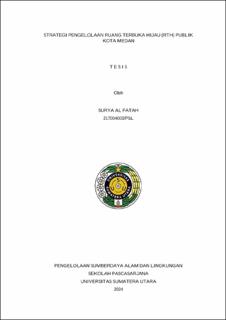| dc.description.abstract | Medan City, characterized by high population density, experiences significant levels of pollution and emissions due to the abundance of vehicles. One measure to reduce emissions and air pollution in urban areas is the establishment of green open spaces. According to Law No. 26 of 2007 concerning Spatial Planning, green open spaces should constitute at least 30% of the city's total area, with 20% being public green open spaces and 10% private green open spaces. The objectives of this study are to analyze the adequacy and distribution of public green open spaces in Medan City, to prioritize factors in the management of these spaces, and to develop a management strategy using the Analytical Hierarchy Process (AHP) and SWOT analysis. The findings reveal that public green open spaces in Medan City do not meet the requirements set by Law No. 26 of 2007, which stipulates that 20% of the city's total area should be designated as public green open spaces. Additionally, the distribution ofpublic green open spaces across the 21 districts of Medan City is uneven. According to expert choice analysis, the priority for managingpublic green open spaces in Medan City is the functional aspect, with a criterion score of 0.467 and a sub-criterion of green city programs scoring 0.808. The preferred management alternative is increasing the participation of green community groups, with a score of 0. 590. Based on SWOT analysis, the management of public green open spaces in Medan City falls within quadrant I, recommending strategies such as optimizing the utilization of public green open spaces, increasing the area of public green open spaces, preserving existing public green open space areas, raising public awareness about public green open spaces, and enhancing "the performanceof responsible agencies to improve collaboration with relevant stakeholder. | en_US |


